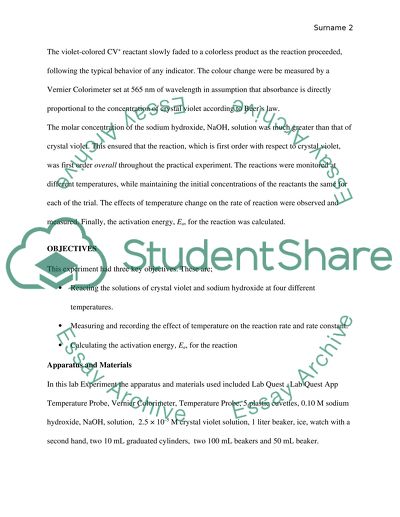Crystal Violate activation of energy Lab Report Example | Topics and Well Written Essays - 500 words. Retrieved from https://studentshare.org/miscellaneous/1604431-crystal-violate-activation-of-energy
Crystal Violate Activation of Energy Lab Report Example | Topics and Well Written Essays - 500 Words. https://studentshare.org/miscellaneous/1604431-crystal-violate-activation-of-energy.


